

“When the legendary Daniel Palma went blind, everyone was shocked. It was ironic that the great architect of the underground night scene had been condemned to live in it forever, sidelined from witnessing a world that was beginning to change.
But one day, twenty-five years later, his sight miraculously returned.
At first, he enjoyed it, but as the days went on, he realized that the world had lost whatever charm he remembered. Everything seemed better when he drew it with his fingertips. But, he missed the night, and it appeared that sight had returned to him as another curse. It was the light that showed him how dull the world had become.
He climbed to the highest floor of the club and, before the horrified gaze of the attendees, flung himself crashing onto the dance floor.
As he bled to death, a blind angel sprang from inside his body, this time blissfully condemned, to dance every night for the rest of eternity amidst the glaring neon lights and extravagant make-up.”
“Cuando el legendario Daniel Palma quedó ciego, todos quedaron impactados. Irónicamente, el gran arquitecto de la noche underground había sido condenado a vivir para siempre en ella, marginado de ser testigo de un mundo que empezaba a cambiar.
Pero un día, veinticinco años después, la vista le volvió milagrosamente.
Al principio lo disfrutó, pero al pasar los días, se fue percatando de que el mundo había perdido el encanto que recordaba. Todo parecía mejor cuando lo dibujaba con las yemas de sus dedos. Extrañaba la noche y parecía que la vista le había vuelto como otra condena. Era la luz la que le dibujaba lo aburrido que se había vuelto el mundo.
Subió al piso más alto de la discoteca y, ante la mirada de horror de los asistentes, se lanzó estrellando su cuerpo contra la pista de baile.
Mientras se desangraba, del interior de su cuerpo brotó un ángel ciego, esta vez felizmente condenado, entre el calor de las luces de neón y el maquillaje, a bailar todas las noches por el resto de la eternidad.”
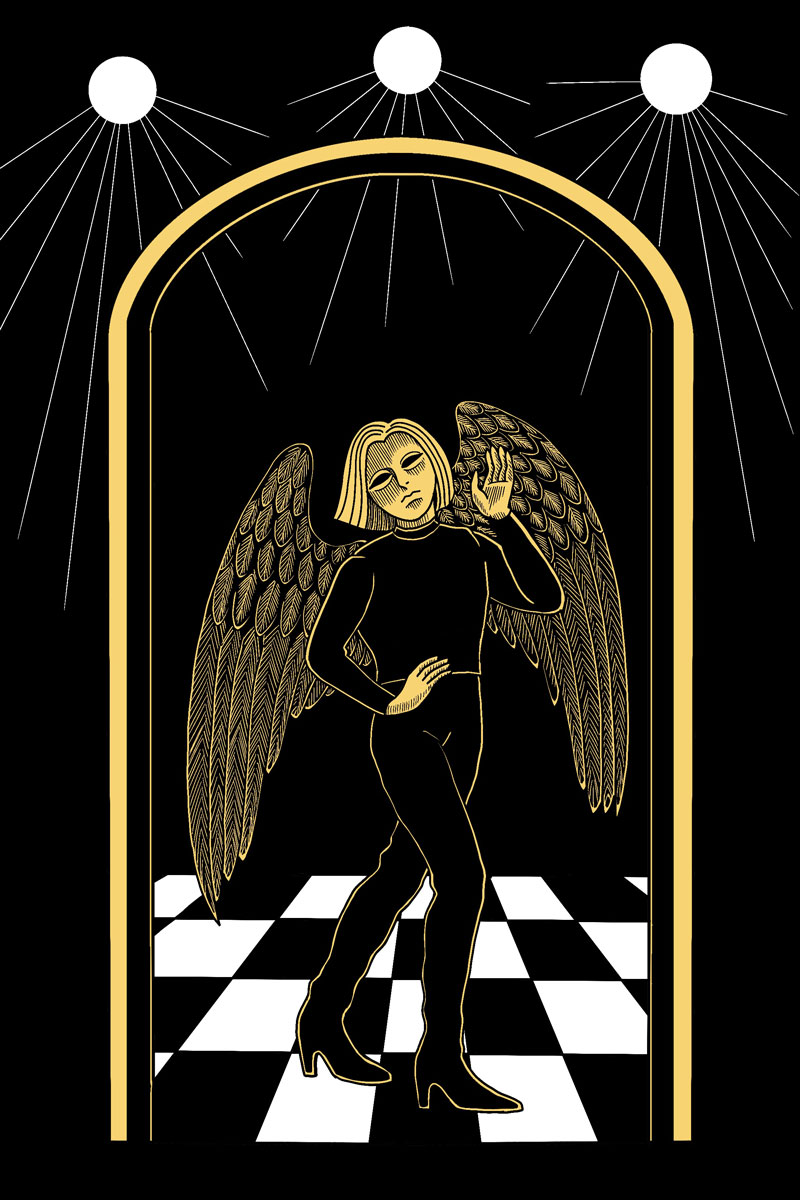
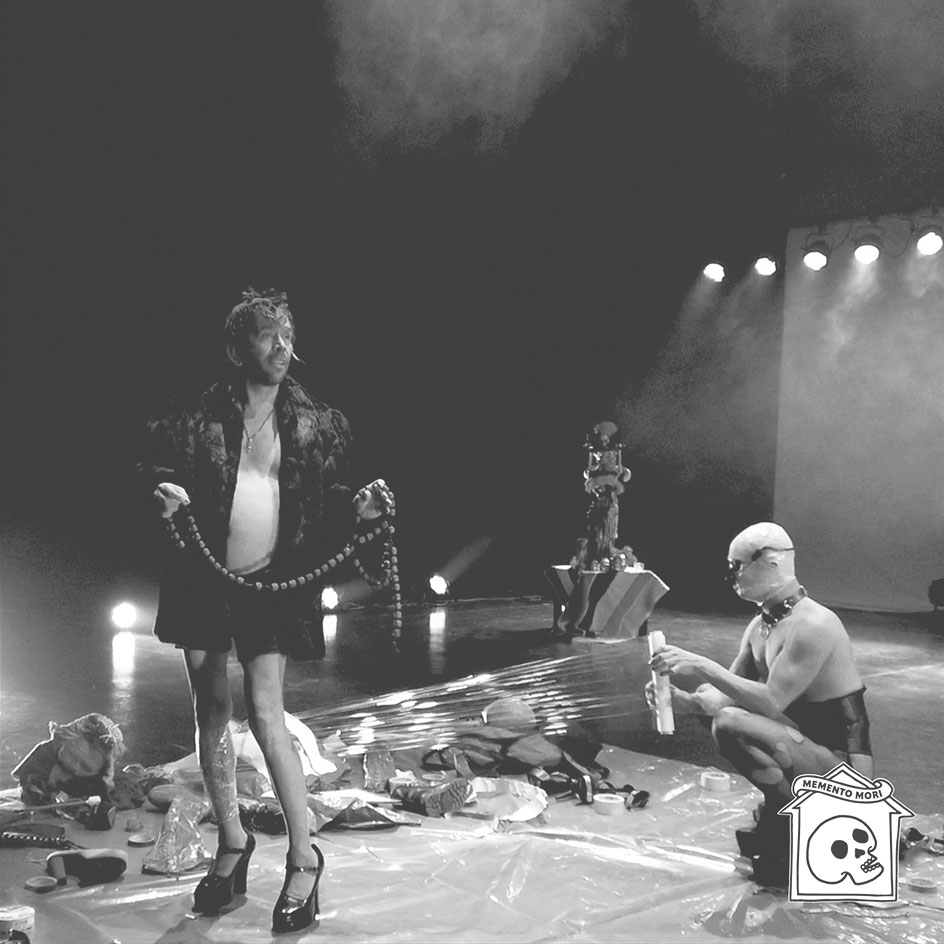
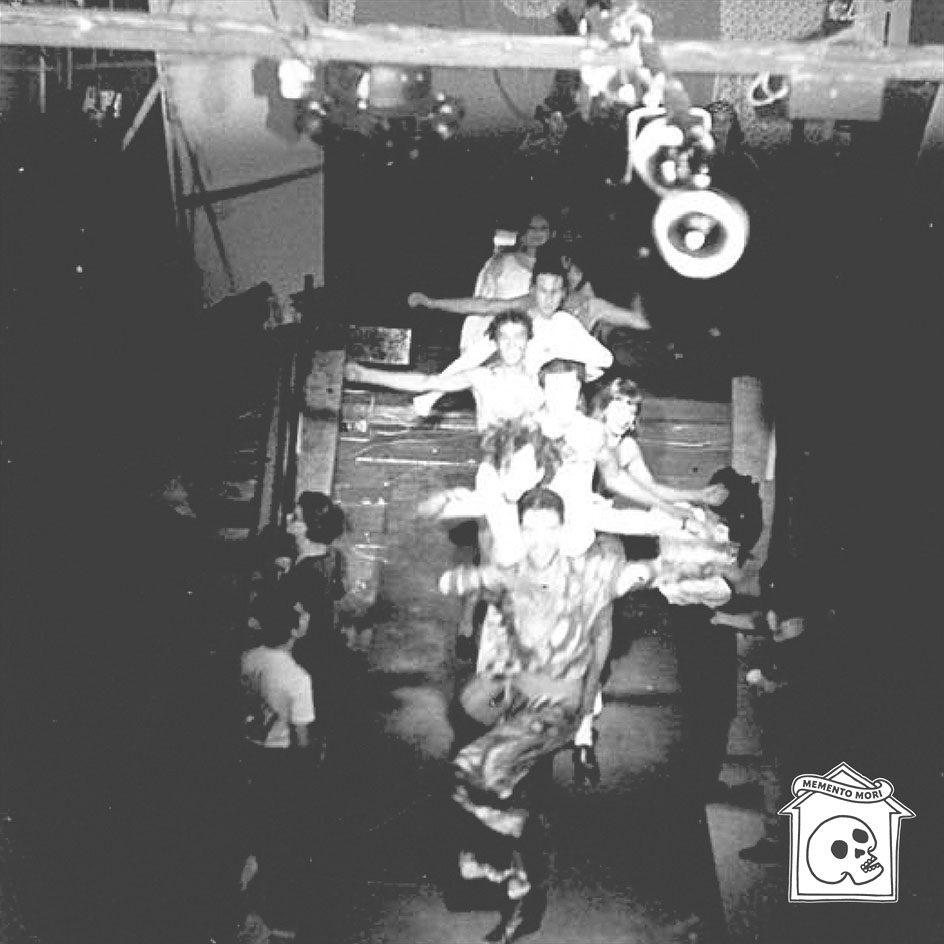
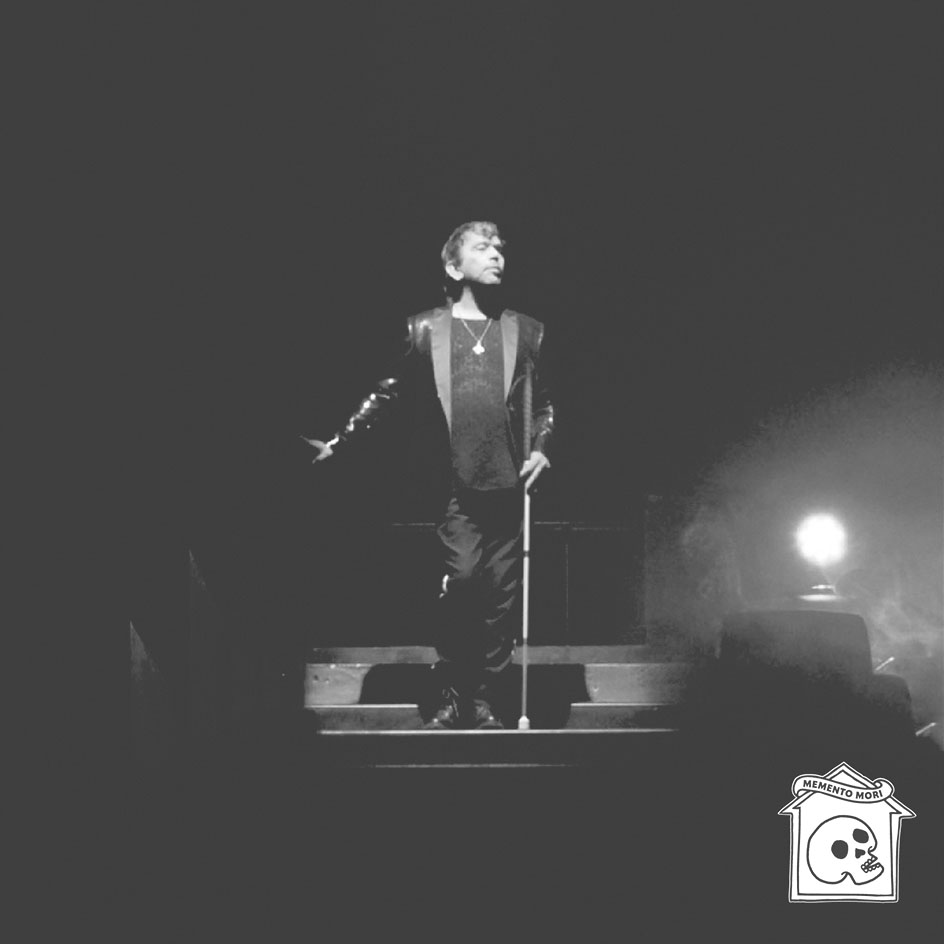
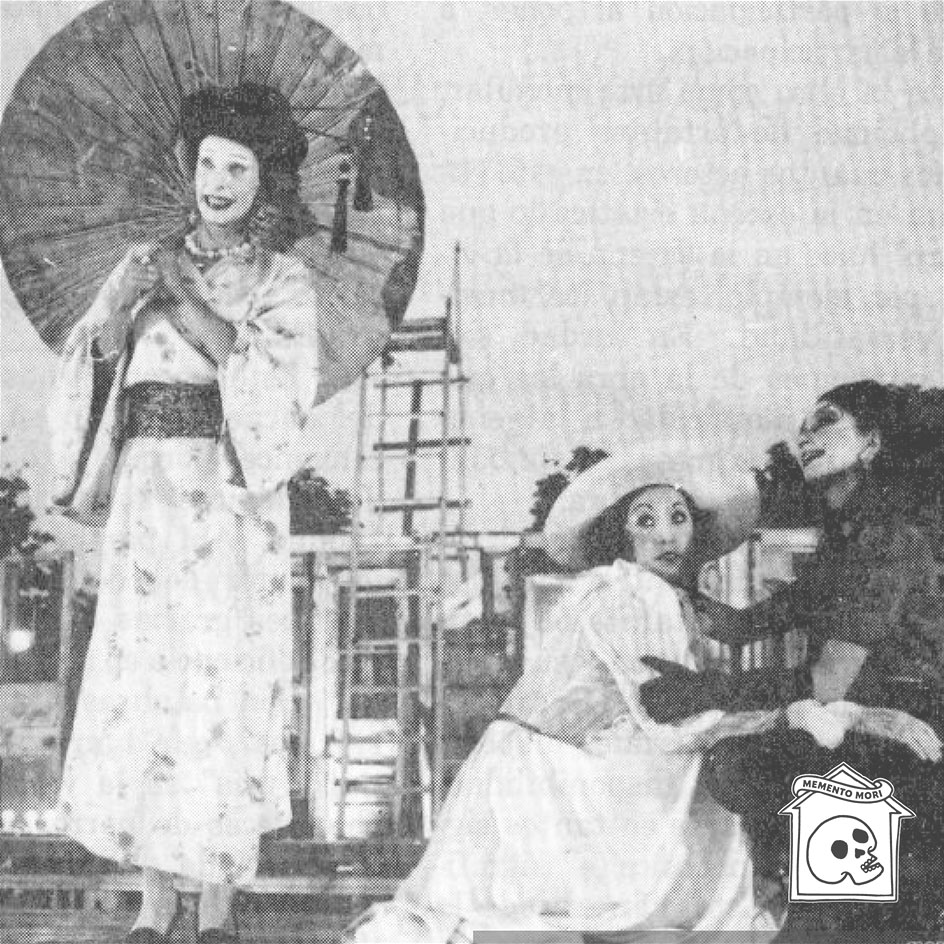


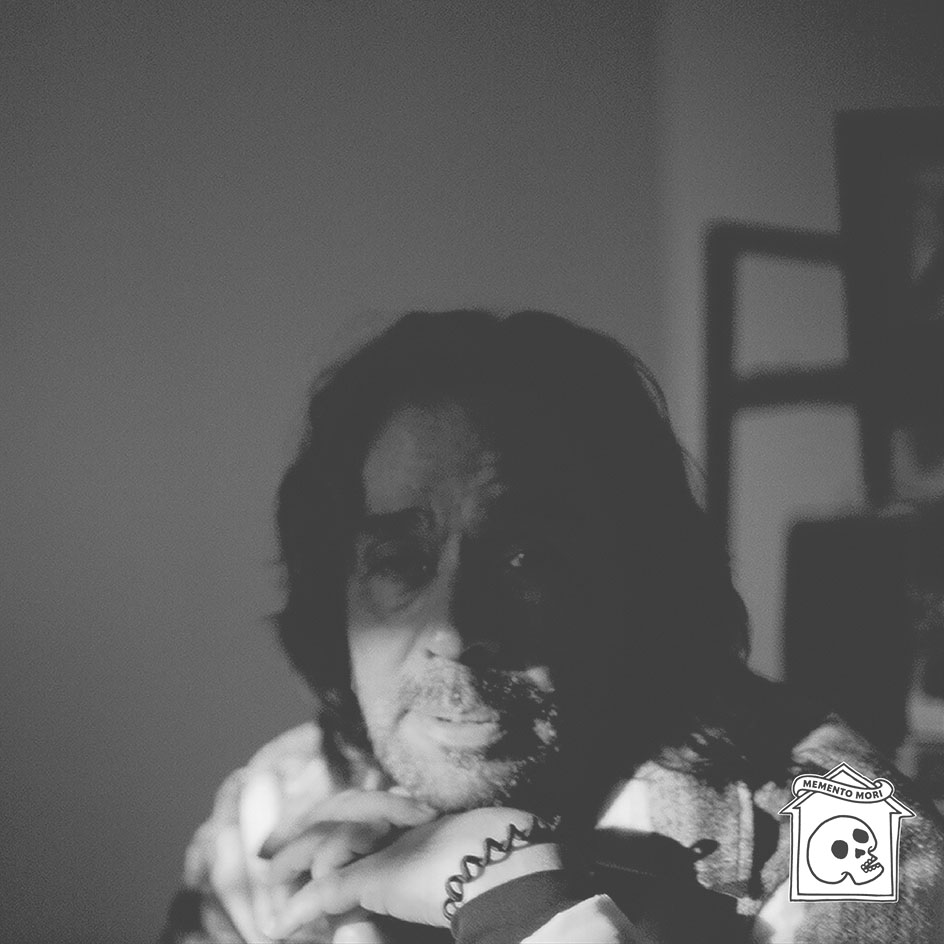
Daniel Palma Sepúlveda was an eminent stage designer who worked in theater and television and was a fundamental part of the national artistic scene.
He was a member of the Gran Circo Teatro Company in its early years under the direction of Andrés Pérez Araya. One of his most renowned works was the set design of "La Negra Ester," a legendary play in Chilean theater history. Nevertheless, he was also a key scenographer in the play "Sí/No," anticipating the 88 plebiscite to support the struggle against the dictatorship.
While working with Gran Circo Teatro during the 1990s, he created and was in charge of producing the famous "Spandex" parties, events as extravagant as they were fundamental for the reactivation of the Chilean cultural and countercultural scene in the immediate post-dictatorship period.
He worked in television during the 1980s. There, he was responsible for the art direction and set design of such emblematic Chilean television programs as "Mazapán," "Oreja, pestaña y ceja," and "Sabor Latino."
His work was strongly marked by political demands, human rights, and the LGBTQ+ population. He also ventured into performance and literature and wrote a book called "Hijos de la trampa" where he describes the relationship between three of his friends, homosexuality in Chile's transitional period, and HIV in Chile, intertwining biography and fiction.
Daniel Palma Sepúlveda fue un destacado Diseñador Escenográfico que trabajó tanto en teatro como televisión, además de ser parte fundamental de la escena artística nacional.
Fue parte de los primeros años de la Compañía Gran Circo Teatro, encabezada por Andrés Pérez Araya, siendo uno de sus trabajos más reconocidos la escenografía de “La Negra Ester”, obra insigne del Teatro Chileno. Sin embargo, también fue escenógrafo clave en la obra “Sí/No”, que anticipaba el plebiscito del año 88, como una forma de luchar contra la dictadura.
Fue trabajando junto al Gran Circo Teatro que, durante los años 90, como una forma de recaudar fondos para la compañía, creó y se encargó de la producción de las famosas fiestas “Spandex”, espacios tan extravagantes como fundamentales para la reactivación de la escena cultural y contracultural chilena en el periodo inmediato luego de la dictadura.
En televisión trabajó durante los años 80. Allí, fue responsable de la dirección de arte, ambientación y escenografía de programas insignes de la televisión chilena como “Mazapán”, “Oreja, pestaña y ceja” y “Sabor Latino”.
Su trabajo estuvo fuertemente marcado por las reivindicaciones políticas, los derechos humanos y de la población LGBTQ+. Incursionó en la performance y también en la literatura. Escribió un libro llamado “Hijos de la trampa” donde relata, mezclando lo biográfico y la ficción, la relación de tres de sus amigos, la homosexualidad en el Chile transicional y el VIH en Chile.